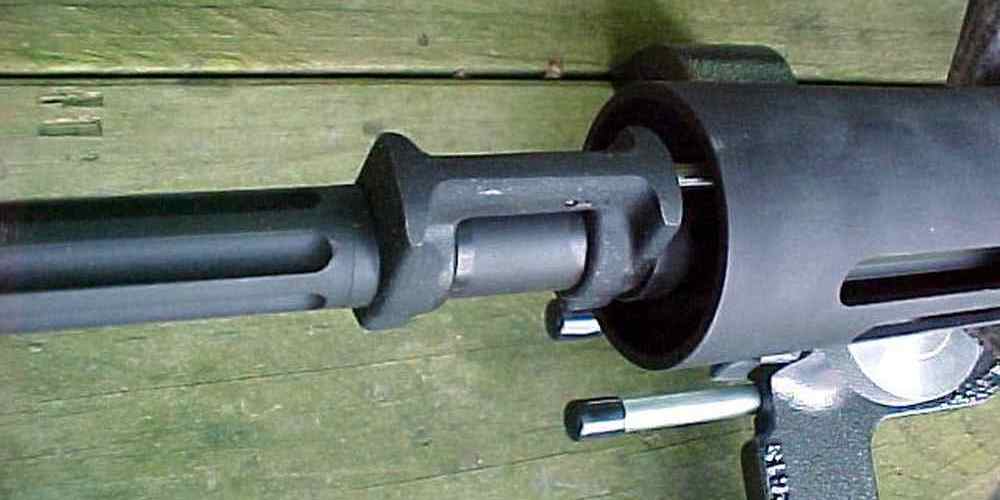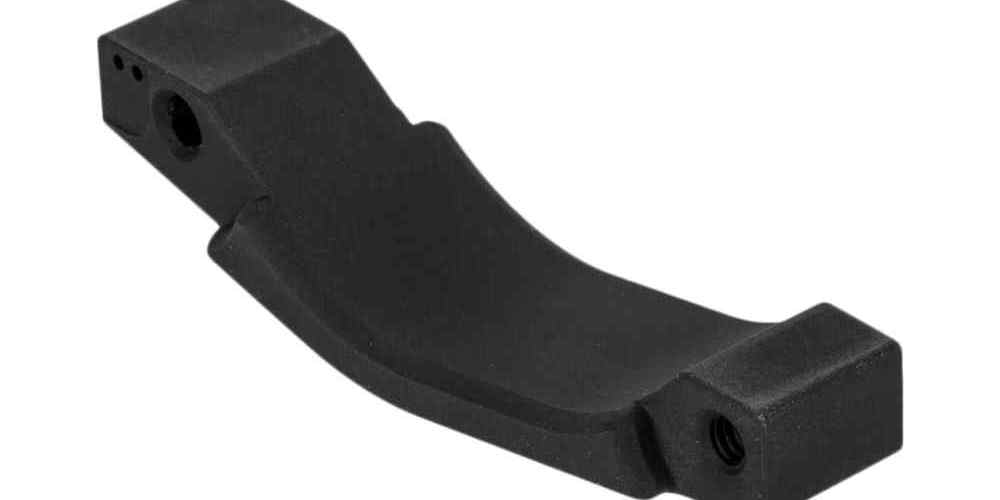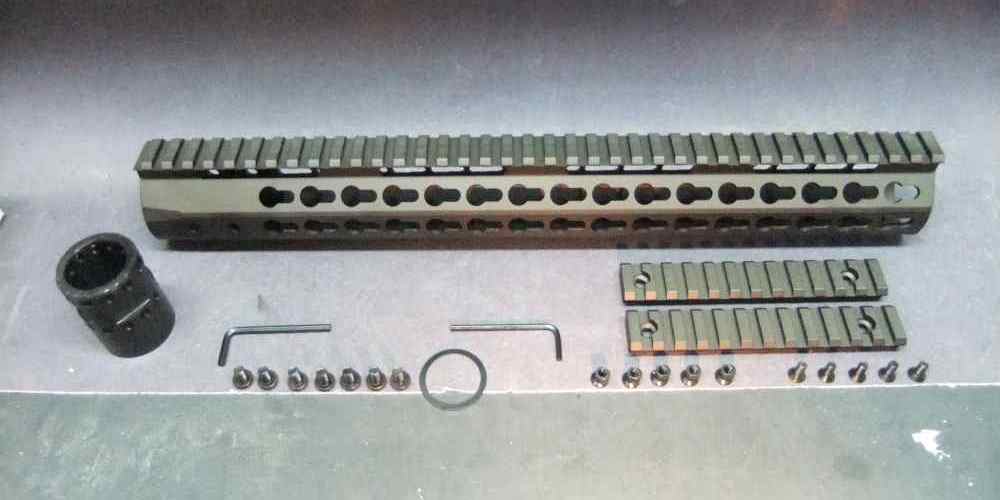“Keep Your AR15 Firing Flawlessly: Essential Field Repair Insights for Every Owner”
Essential Field Repair Tips for AR15 Owners
The AR15 Owner’s Guide to Field Repairs: What You Need to Know
Owning an AR15 rifle comes with the responsibility of understanding its maintenance and repair, especially when you’re out in the field. Whether you’re a seasoned shooter or a newcomer to the world of firearms, knowing how to troubleshoot and fix common issues with your AR15 can be the difference between a successful day at the range or a frustrating one. In this guide, we’ll explore essential field repair tips that every AR15 owner should know. First and foremost, it’s crucial to familiarize yourself with the basic anatomy of your AR15. Knowing the function and location of each component will not only help you diagnose problems quickly but also ensure you can address them effectively. With this foundational knowledge, you’re better equipped to handle unexpected malfunctions that may arise. When it comes to field repairs, one of the most common issues you might encounter is a failure to feed or eject. This can often be attributed to a dirty or obstructed chamber and bolt carrier group. To address this, ensure you have a cleaning kit with you that includes a chamber brush, cleaning rod, and some form of solvent. A quick field strip and clean can often resolve these issues, restoring your rifle’s functionality. Remember to lubricate the bolt carrier group lightly after cleaning, as proper lubrication is key to smooth operation. Another tip is to keep an eye on your ar15‘s gas system. The gas tube and gas block are critical for cycling rounds properly. If you notice short-stroking, where the bolt doesn’t fully cycle, it could be due to a clogged gas port or tube. In such cases, ensure that the gas block is aligned correctly and that there are no obstructions in the gas tube. A simple cleaning rod can be used to clear out any debris that may have accumulated during firing. Additionally, it’s wise to carry a few spare parts with you. Springs, detents, and pins are small and can be easily lost or broken. Having replacements on hand can save you from a non-functional firearm. A multi-tool designed for the AR15 is also invaluable for field repairs, as it can help you tighten loose parts, adjust sights, and perform other necessary adjustments. Moreover, be attentive to the condition of your magazines. Damaged or dirty magazines are often culprits behind feeding issues. Inspect them regularly for dents, bent feed lips, or fouling that could impede the smooth feeding of rounds. Sometimes, simply disassembling and cleaning your magazines can resolve these problems. Lastly, practice is key to becoming proficient at field repairs. Take the time to strip down your AR15 and reassemble it until you’re comfortable with the process. This practice will not only improve your understanding of how your rifle functions but also increase your confidence in handling repairs under stress or in less-than-ideal conditions. In conclusion, being prepared for field repairs is an essential aspect of AR15 ownership. By equipping yourself with the knowledge of your rifle’s mechanics, carrying the right tools and spare parts, and regularly practicing maintenance and troubleshooting, you’ll ensure that your AR15 remains reliable when you need it most. Remember, the key to a well-maintained firearm is not just in the tools you carry but in the knowledge and skills you possess.
The AR15 Field Repair Kit: Must-Have Tools and Components
The AR15 Owner’s Guide to Field Repairs: What You Need to Know
When it comes to maintaining the reliability and performance of your AR15, having a well-stocked field repair kit is essential. Whether you’re at the range, on a hunting trip, or in a competitive shooting event, the ability to perform quick fixes can mean the difference between a successful outing and a frustrating one. In this guide, we’ll explore the must-have tools and components that should be included in every AR15 owner’s field repair kit. First and foremost, a quality multi-tool designed for the AR15 is the cornerstone of any field repair kit. This versatile instrument combines several tools in one, including a castle nut wrench, screwdrivers, and a bolt carrier group scraper. It’s the Swiss Army knife for the AR15 enthusiast, allowing you to tackle a variety of common issues without having to carry a full toolbox. Next, a set of durable punches and a small hammer are indispensable for dealing with pins and detents. These tools are crucial for disassembling and reassembling your rifle, especially when you need to replace parts or perform a deep clean. Opt for a set that includes roll pin punches, as these are specifically designed to work with the pins found in an AR15 without causing damage. Another key component is a set of replacement parts. This should include items that are prone to wear or loss, such as springs, detents, and gas rings. Having these on hand can save you from a malfunction at an inopportune time. Additionally, consider carrying an extra bolt and firing pin, as these are critical components that can break or wear out with extensive use. Cleaning supplies are also a must-have in your field repair kit. A compact cleaning rod, bore brush, and chamber brush will help you clear obstructions and maintain accuracy. Include a small bottle of quality lubricant and some cleaning patches to keep your AR15 running smoothly in any conditions. For optics-equipped rifles, a set of spare batteries for your red dot sight or scope is a wise addition. Nothing is more frustrating than a dead optic when you need it most. Similarly, a small lens cloth can help you keep your optics clear of dust, fingerprints, and debris. Lastly, don’t forget the importance of a good flashlight. Whether you’re working on your rifle in low-light conditions or need to inspect the bore for obstructions, a bright, reliable light source is invaluable. In conclusion, a well-prepared AR15 field repair kit is an investment in peace of mind. By including a multi-tool, punches and a hammer, replacement parts, cleaning supplies, spare batteries, and a flashlight, you’ll be equipped to handle most common issues that might arise while using your rifle. Remember, the goal is not to carry an entire gunsmith shop with you, but rather to have a selection of tools and components that will allow you to address urgent repairs quickly and efficiently. With this friendly guide to the essentials, you’ll be ready to keep your AR15 in top condition, no matter where your shooting adventures take you.
Step-by-Step Guide to Troubleshooting Common AR15 Issues in the Field
The AR15 Owner’s Guide to Field Repairs: What You Need to Know
When you’re out in the field with your AR15, the last thing you want is for your rifle to fail. Fortunately, with a bit of knowledge and the right tools, you can troubleshoot and repair common issues that might arise. This step-by-step guide will walk you through the process of identifying and fixing typical problems, ensuring that your AR15 remains a reliable companion on your outdoor adventures. Firstly, it’s essential to understand that the key to successful field repairs is preparation. Before heading out, make sure you have a basic field repair kit that includes items such as a multi-tool, cleaning rod, lubricant, spare batteries for optics, and a selection of critical spare parts like bolts, springs, and pins. With these tools at hand, you’re well-equipped to handle most issues. Now, let’s dive into troubleshooting. If your AR15 fails to fire, the first step is to perform a safety check. Ensure the firearm is pointed in a safe direction and check if the safety is engaged. If it’s on, disengage it and attempt to fire again. If the rifle still doesn’t fire, it’s time to check the chamber. Remove the magazine, pull back the charging handle to eject any round or casing that may be stuck, and inspect the chamber for obstructions. A quick clean with your rod can clear out debris that might be causing the issue. Should you encounter a failure to feed, examine the magazine first. Magazines can be the source of many feeding problems, so ensure it’s properly seated and that the springs are functioning correctly. If the magazine seems fine, the issue might be with the ammunition. Try using a different magazine or type of ammo to see if the problem persists. Additionally, a dirty or dry rifle can impede proper feeding, so a quick field strip and lubrication might be in order. Another common issue is a failure to eject, which can often be attributed to a dirty or obstructed ejector or extractor. A simple cleaning can usually resolve this. However, if the problem continues, inspect the extractor for wear or damage. Replacing a worn extractor is a straightforward process that can be done in the field with your multi-tool and spare parts. If you’re experiencing accuracy issues, the first thing to check is your optics. Ensure that your sights or scope are securely mounted and haven’t been knocked out of alignment. If your optics are fine, consider the possibility of a loose barrel or worn gas rings, both of which can affect accuracy. Tightening the barrel nut or replacing the gas rings are both repairs that can be done with your multi-tool and spare parts. Lastly, if your rifle is double firing or experiencing hammer follow, this is a serious issue that can be dangerous. It’s often caused by a malfunctioning trigger or hammer assembly. While you can attempt to replace these components in the field, it’s generally recommended to seek the assistance of a professional gunsmith for safety reasons. In conclusion, being able to perform field repairs on your AR15 is an invaluable skill that can save your day and keep you safe. By familiarizing yourself with these troubleshooting steps and carrying a well-stocked repair kit, you’ll be prepared to address common issues that might otherwise cut your shooting session short. Remember, regular maintenance and familiarity with your firearm’s operation are the best ways to prevent problems before they start. Stay safe, and happy shooting!
Advanced Field Repairs: Enhancing AR15 Reliability When It Matters Most
The AR15 Owner’s Guide to Field Repairs: What You Need to Know
For AR15 enthusiasts, the rifle’s reliability is paramount, especially when operating in field conditions where a gunsmith is not just around the corner. Advanced field repairs are essential skills that can enhance your AR15’s reliability when it matters most. Whether you’re a competitive shooter, hunter, or someone who enjoys recreational shooting, understanding the intricacies of your rifle and being able to troubleshoot issues on the fly can be the difference between a successful outing and a frustrating one. Firstly, it’s crucial to have a well-stocked field repair kit. This kit should include a variety of tools such as a multi-tool designed for AR15s, a set of punches, a hammer, needle-nose pliers, a cleaning rod, lubricant, and spare parts like bolts, springs, and pins. With these tools at your disposal, you’ll be prepared to handle most common issues that might arise. One of the most frequent problems encountered with the AR15 is a failure to feed or eject properly. This can often be attributed to a dirty or obstructed chamber and bolt carrier group. In such cases, a quick field strip and cleaning can resolve the issue. Begin by ensuring the firearm is unloaded, then remove the bolt carrier group and charging handle. Using your cleaning rod and a suitable brush, scrub the chamber and bolt carrier group thoroughly, paying special attention to the bolt face and extractor. Once cleaned, a light application of lubricant can help prevent further malfunctions. Another area that can affect reliability is the gas system. The AR15 operates on a direct impingement system, which can become clogged with carbon buildup over time. To address this, remove the bolt carrier group and use your cleaning tools to clear any debris from the gas tube and gas key. Be careful not to alter the alignment of the gas tube, as this can lead to more significant issues. In addition to cleaning, replacing worn or damaged parts is a critical aspect of field repairs. For instance, a weak or broken extractor spring can cause ejection failures. To replace it, use your punches to remove the retaining pin, swap out the spring, and reassemble. Similarly, a damaged buffer or buffer spring can affect the rifle’s cycling. These components can be accessed by removing the buffer tube’s retaining pin and carefully replacing the parts. It’s also important to be familiar with the AR15’s trigger assembly. A malfunctioning trigger can render your rifle inoperable. If you encounter trigger issues, carefully disassemble the trigger mechanism, inspect for broken or worn parts, and replace as necessary. Reassembling the trigger assembly correctly is vital for the safe operation of your firearm. Lastly, maintaining a consistent maintenance routine can preempt many field repair needs. Regularly inspect your AR15 for signs of wear, corrosion, or damage. By addressing these issues before they become critical, you can ensure your rifle remains reliable when you need it most. In conclusion, mastering advanced field repairs is an invaluable skill for any AR15 owner. By equipping yourself with the right tools, knowledge, and spare parts, you can enhance your rifle’s reliability and maintain its performance under any conditions. Remember, the key to a well-functioning AR15 is a combination of proactive maintenance and the ability to perform effective field repairs when necessary. With these skills in your arsenal, you’ll be well-prepared to keep your AR15 running smoothly, no matter where your shooting adventures take you.

Preventative Maintenance: Keeping Your AR15 Field-Ready at All Times
The AR15 Owner’s Guide to Field Repairs: What You Need to Know
For AR15 enthusiasts, the rifle is more than a firearm; it’s a symbol of precision engineering and versatility. However, to ensure that your AR15 remains a reliable companion, whether at the range or in the field, preventative maintenance is key. Keeping your AR15 field-ready at all times requires a proactive approach to care and a solid understanding of the rifle’s mechanics. First and foremost, familiarize yourself with the AR15’s components and how they work together. This knowledge is crucial for diagnosing issues and performing effective field repairs. Start by regularly disassembling your rifle for a thorough cleaning. Carbon buildup, especially in the bolt carrier group, can lead to malfunctions. Use a quality solvent to break down residue and a brush to scrub the parts clean. After cleaning, lubrication is your next line of defense. A well-lubricated AR15 will operate more smoothly and reliably. Apply lubricant sparingly to the bolt carrier group, ensuring that it moves freely without excess oil attracting dirt. Moreover, inspect your rifle’s parts for wear and tear. Pay special attention to the bolt, gas rings, and extractor, as these are high-wear components. If you notice any cracks or excessive wear, replace these parts immediately to prevent malfunctions. Keeping a small inventory of spare parts, such as springs, pins, and gas rings, can be a lifesaver when you’re miles from a gunsmith. Another critical aspect of preventative maintenance is magazine care. Damaged or dirty magazines are often the culprits behind feeding issues. Regularly disassemble your magazines to clean them and inspect for bent feed lips or weakened springs. It’s also wise to rotate your magazines to ensure even wear and to keep them loaded with a few rounds less than capacity to preserve spring tension. When it comes to optics and accessories, ensure that they are securely mounted and that all screws are tightened to the manufacturer’s specifications. Loose mounts can lead to a loss of zero and affect accuracy. Additionally, check the batteries in your electronic sights and carry spares with you. A dead optic in the field is as good as no optic at all. In the event that your AR15 does encounter a problem, having a basic field repair kit can make all the difference. This kit should include a multi-tool designed for the AR15, spare batteries for your optics, a cleaning rod to clear barrel obstructions, and the aforementioned spare parts. With these tools at hand, you’ll be equipped to handle most common issues that can arise. Lastly, practice makes perfect. Regularly practicing field-stripping and reassembling your rifle will not only improve your familiarity with its parts but also increase your confidence in handling repairs. This hands-on experience is invaluable and will ensure that if your AR15 does need attention while you’re in the field, you’ll be well-prepared to address the issue swiftly and effectively. In conclusion, preventative maintenance is the cornerstone of keeping your AR15 field-ready. By understanding your rifle’s mechanics, regularly cleaning and inspecting its components, caring for magazines, securing accessories, and being prepared with a field repair kit, you can ensure that your AR15 operates at peak performance. Remember, a well-maintained AR15 is a dependable one, and with these tips, you’ll be ready for whatever comes your way.







